Things to Consider When Closing Vents in Unused Rooms
Sometimes what appears to be a good idea for saving energy may not work so well. That’s the case when closing forced air heating and air conditioning vents (registers) in unused rooms in your house or commercial building. Instead of helping, this practice may increase utility bills and damage heating ventilation and air conditioning (HVAC) systems.
A home HVAC system generally has one register and one fresh air return per room. If you close the register but leave the return open, the return’s duct creates a suction. It draws in outside air through leaks surrounding exterior doors, windows and electrical outlets. In winter, this means extra cold air to heat. In the summer, the infiltration of extra air increases cooling costs.
Split Air Conditioner vs. Packaged Air Conditioner
When it comes time to upgrade your central air conditioning, knowing the pros and cons of a packaged system and a split system can assist you in deciding which type is install. Armed with the pros and cons of each, you can choose the best type for your home and your needs.
When it comes time to upgrade your central air conditioning, knowing the pros and cons of a packaged system and a split system can assist you in deciding which type is install. Armed with the pros and cons of each, you can choose the best type for your home and your needs.
Why You’ll Love the Carrier Infinity Series
At Cox, we believe that giving you the tools you need to live comfortably for less is important. With the focus on sustainable living, many of our customers have been asking about HVAC options that provide great comfort with green benefits. 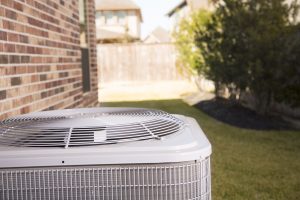
How to Set Your Thermostat Before You Leave for an Extended Summer Vacation
Getting ready for a serious getaway? You know you can lower your utility bill by adjusting the thermostat for short trips, but what about longer ones? Though the basic principle applies, there are a few issues to be aware of first. Here’s a quick rundown to keep you on the right track:
Benefits of Adding Thermostats to Different Areas of Your Home
One of the big buzz words right now in HVAC is zoned heating and cooling. It’s being touted as a great way to save energy by only heating the areas being used. But what is it and how well will it work in your home? Let’s take a look.
A Look Back: How Homes Kept Cool Before AC
It’s hard to imagine living anywhere, especially Florida, without the benefits of an air conditioner. But the air co
Tips For Managing Your Air In Fluctuating Weather
While most people enjoy the arrival of fall weather the constant swings from hot to cold temperatures can frustrate homeowners as they try to keep their homes at a comfortable temperature. To save this frustration, try the following tips, then call Cox Air if you think your home comfort can be improved even more.
What It Means If One Room Feels Hotter Than Another?
If you’re having problems where one room in your home feels warmer than the others, there are a number of possible issues that could be the cause of this problem. From simple to serious fixes, let’s take a look at the most common reasons for uneven cooling and what you need to do to fix the problem.
Step-by-Step Instructions on How to Replace the Batteries in Your Home Thermostat
Many Tampa homeowners aren’t aware that they need to change their thermostat batteries on a regular schedule to avoid unexpected loss of air conditioning or heating service. Some thermostats are hard-wired to the house power supply and don’t have batteries, but most modern digital thermostats are battery operated. When it comes time for the change, homeowners need to know how to replace the batteries in a thermostat.
Since there are dozens of makes and models of thermostats in use, it’s impossible to create just one list of steps describing how to replace the batteries in a thermostat that will cover all situations. But, here are some general tips to follow:
- Read the owner’s manual that came with the thermostat for guidelines on how often to install new batteries and instructions for changing them.
- Unless the owner’s manual tells you otherwise, replace the batteries once a year. If you combine this task with other annual maintenance tasks such as replacing smoke alarm batteries, you’ll be less likely to forget to do it.
- Even without written instructions, changing thermostat batteries is a fairly straightforward process. First, carefully remove the cover or faceplate from the thermostat so you can see the batteries or the battery holder. Take note of the position of the batteries, so when you put new batteries in heir polarities are correct. Use new batteries that are the same type and voltage as the old ones. Put the new batteries in and replace the cover.
- Test the thermostat with the new batteries in place and reset the programming if necessary. Most newer programmable thermostat models have internal memories so the thermostat doesn’t lose its settings when the batteries are replaced.
If you’re lost on how to replace the batteries in a thermostat of your Tampa area home, contact Cox Air Conditioning & Heating. We’re here to help!
Image Provided by Shutterstock.com



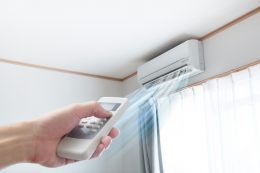

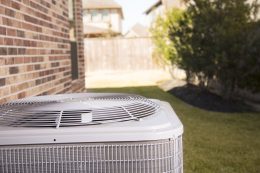
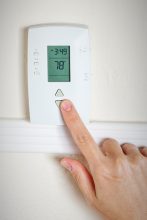
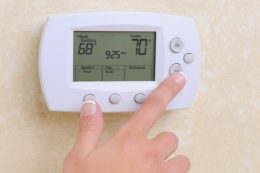



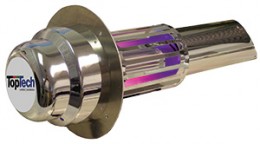



Recent Comments